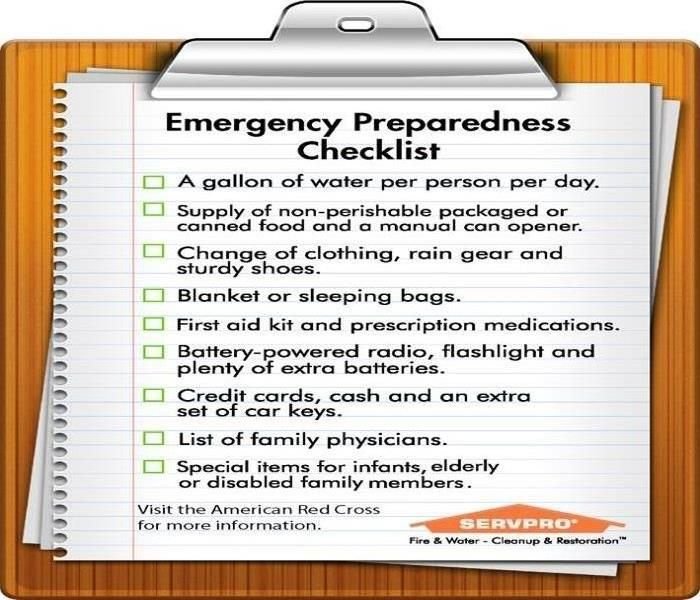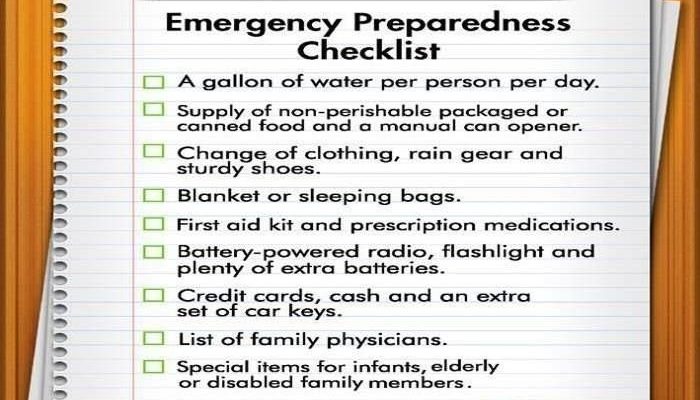
Here’s the thing: most folks realize just how much they rely on electricity only when it’s gone. We’ve all fumbled through drawers for matches or tried to “reset” the Wi-Fi by habit, forgetting the router is as powerless as we are. Whether you’re brand new to blackout prep or just need a refresher, having a solid survival checklist is less about overreacting and more about being the person neighbors come to *for* advice, not the one borrowing batteries.
Let’s walk through the ultimate blackout survival checklist tailored for zip code 30301’s quirks, from prepping your home for outages to syncing with community resources. It’s not just about what to stash, but how to think, act, and stay safe when the lights go out.
Understanding Blackouts in 30301: What’s Really at Stake?
Blackouts in Atlanta are their own beast. The 30301 area, right in the city’s pulse, is surrounded by old trees, crowded power lines, and unpredictable weather. When a thunderstorm barrels through or a car takes out a pole, suddenly your plans for the day take a back seat. Honestly, even if you think, “It won’t happen to me,” the truth is, it probably will—eventually.
With so many condos, historic houses, and apartment buildings close together, one outage can ripple through the neighborhood fast, leaving hundreds needing the same resources. And it’s not just about losing Netflix for an evening. Refrigerators shut down, phone batteries drain, medical devices need power, and security systems might stop working. Let me explain: a blackout isn’t just inconvenient—it can be genuinely risky if you’re not prepared.
You might be wondering why you can’t just “wait it out.” Well, depending on the cause, restoring power in the 30301 zip code can take hours or even days. That’s why it pays to have a checklist and a plan. Treat it like you would a fire drill—boring until it’s suddenly very important.
Blackout Essentials: What Should You Always Have Ready?
Think of your blackout kit as a code you’ll need to crack, mixing must-haves with nice-to-haves for maximum peace of mind. Start with the basics, and remember: you don’t need to go full doomsday prepper—just cover your bases so a blackout is a hassle, not a crisis.
- Flashlights and Batteries: Keep at least two per room, with extra batteries in various sizes. Battery-powered lanterns and headlamps are even better for hands-free tasks.
- Portable Power Banks: Invest in one or two hefty battery packs for charging phones, tablets, or even small USB fans. Make sure they’re fully charged before storms or outages are expected.
- Non-Perishable Food and Water: Have enough snacks, bottled water, and easy-open canned goods for 2–3 days. Don’t forget manual can openers—nobody wants to “troubleshoot” a stubborn can in the dark.
- First Aid Kit: A complete kit with bandages, antiseptics, and any personal medications is a must. Include backup glasses and any medical devices that require batteries.
- Emergency Lighting: Candles can work in a pinch, but LED lanterns are much safer and brighter. If using candles, always keep them away from curtains and never leave them unattended.
Here’s a little tip: store these basics together in a sturdy tote or backpack, so you can grab them quickly. It’s sort of like having a “go bag”—except you’re not running away, just moving through your own home as if it’s a campground.
Keeping Connected: Powering Devices & Communication
When the power’s out in 30301, staying in the loop suddenly gets tricky. You can’t just reset your router or sync up with news unless you’ve prepared. The last thing you want is to be in the dark—literally and figuratively.
First, make sure your phone and power banks are always as charged as possible before predicted storms or maintenance. A fully charged power bank can keep your phone going for another day or two, letting you check updates, call family, or reach emergency services if needed. For even more backup, some folks use small solar chargers or car chargers—handy when outages stretch on longer than expected.
Next, consider a battery-powered or hand-crank radio. It sounds old-school, but these devices don’t need wi-fi or mobile data and can give you city updates, weather codes, and emergency broadcasts. If you rely on medical devices that use electricity, talk with your provider about battery or backup options. Remember, in a blackout, being able to communicate isn’t just about convenience—it’s about safety.
And here’s a little personal story: my neighbor once tried pairing her TV remote every hour after a major storm, thinking maybe the “universal code” changed. Turns out, she just needed to save her phone’s battery for an actual emergency, not for troubleshooting Netflix.
Managing Food and Water During an Outage
Food safety is one of those things people forget until they open the fridge and wonder, “Is this still okay to eat?” Let me make it simple. If the power’s been out for more than four hours, refrigerated food is in the danger zone. Milk, meat, eggs—they all spoil fast when things warm up.
Here’s how to keep things safe:
- Keep fridge and freezer doors shut as much as possible. This helps sync the cold and keeps food safe for up to 4 hours in the fridge, and 24–48 hours in a full freezer.
- Use coolers and ice packs (or even frozen water bottles) to extend cooling, especially if the outage might last overnight.
- When in doubt, throw it out. Don’t take chances with questionable food—it’s not worth a midnight visit to urgent care.
Water is usually safe during a standard blackout, but if you hear alerts about city water systems, stick to bottled or boiled water until things are reset. For an added layer of confidence, store a few gallons per person just in case.
Imagine a blackout hits right before dinner. With no microwave or oven, it’s suddenly a picnic. That means canned soup, granola bars, nut butter, and shelf-stable snacks become real lifesavers. No syncing or codes required—just open and enjoy.
Staying Safe and Calm When the Lights Go Out
The first few minutes of a blackout can feel a little chaotic, but here’s the key: slow down, breathe, and work through your plan. Flickering lights might tempt you to fumble with every switch, but resist the urge. Instead, grab your flashlight, check on family or roommates, and make sure everyone’s okay.
If you find yourself nervous, remember that most outages in 30301 don’t last forever. The city’s emergency response teams move quickly, but take a moment to double-check doors and windows, especially if you live alone or in a larger building. Security systems might lose power unless they have a battery backup, so extra caution doesn’t hurt.
If you know of elderly neighbors or anyone with mobility issues, check on them if it’s safe to do so. Sometimes a quick phone call or knock at the door goes a long way. For families with kids, treat the outage as an adventure—break out board games or tell stories by lantern light. It helps keep spirits up and distracts from the inconvenience.
And a personal note: I always keep a notepad and pen handy during blackouts. It’s surprising how often you want to jot things down when you can’t just “pair” with your phone for reminders.
Blackout-Proofing Your Home: Prep Work That Pays Off
Preparing for a blackout in the 30301 zip code isn’t just about having supplies—it’s about setting up your home to weather outages smoothly. Think of it like troubleshooting your home the way you might a stubborn smart device.
Start by making a habit of charging critical gear (phones, laptops, and power banks) during weather alerts. Test flashlights and swap out batteries every few months. Some folks install surge protectors to help reset sensitive electronics safely when power returns—especially if you’ve ever lost a modem or TV to a sudden surge.
If you own your home, consider a small generator or backup battery system (especially if you rely on electric medical devices). Even a basic unit can keep a fridge or a heating pad running. Just remember to follow all safety instructions—generators never belong indoors or near windows due to carbon monoxide risk.
Lastly, make a “blackout sync” checklist with your household: Who checks the fridge? Who grabs the emergency kit? Creating these routines means less panic and more action when the lights snap off unexpectedly.
Syncing with Community Resources and Emergency Services
You don’t have to go it alone during a blackout. The 30301 zip code community has strong roots, and knowing how to sync with local resources makes a world of difference.
Bookmark the City of Atlanta and Georgia Power websites on your phone for quick access to outage maps, status codes, and updates. If you spot a downed power line or need to report an outage, don’t assume someone else will do it—jump in and make the call or online report. The quicker the info travels, the quicker help arrives.
Local community centers, libraries, and shelters often serve as cooling stations or charging spots during extended outages. Keep a running list of these places, with addresses and phone numbers written down (since digital syncing might be tricky). If you or someone in your home has special needs, many community organizations offer extra help—just reach out before an outage so you’re on their radar.
Neighbors are a resource, too. Set up a simple check-in system, especially for anyone living alone or those who might need troubleshooting help with remotes, devices, or even navigating the dark hallways of an old building.
Insight: The more you “pair” up with others before a blackout, the smoother the experience—information, help, and a sense of calm all travel faster.
Children, Pets, and Special Needs: Extra Steps to Take
If you’re caring for kids, pets, or anyone with special needs, your blackout prep gets a few extra layers. Young children can get scared in total darkness, so keep nightlights or small lanterns on hand. Let them help gather supplies—it turns anxiety into action and reassures them.
For pets, blackout anxiety is real. Dogs and cats might get startled by sudden silence or unfamiliar flashlights. Make sure you have enough pet food, water, and a quiet space with familiar bedding. If your pet’s on medication that needs refrigeration or precise timing, plan ahead for outages and talk to your vet for tips.
If anyone in your home uses medical equipment that requires power, contact your supplier or doctor about battery backup options. Create a list of emergency contacts and protocols and tape it near your main emergency kit for quick access.
Honestly, it’s okay to accept help. Sometimes the best troubleshooting is sharing responsibilities with others—neighbors, friends, or nearby family.
Wrapping Up: Why a Blackout Survival Checklist Matters
At the end of the day, living in zip code 30301 means blackouts are just part of life’s rhythm—like Atlanta’s summer storms or the occasional Braves rally downtown. Having a blackout survival checklist isn’t about fear, but about control. It’s the difference between stumbling around in the dark and calmly grabbing your flashlight, knowing you’ve got this.
So, whether you remember to charge your power bank tonight or swap out those flashlight batteries tomorrow, know that every small step matters. You’re building a little peace of mind—one checklist line at a time. Stay safe, watch out for neighbors, and let the lights coming back on be the least interesting part of your day.
